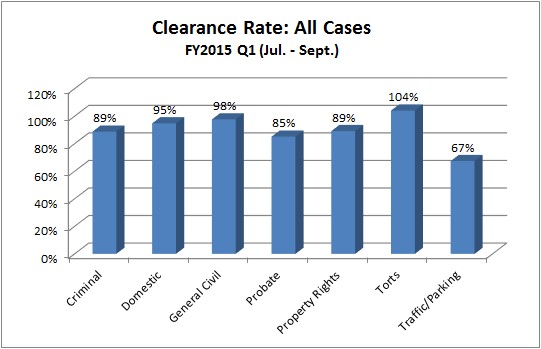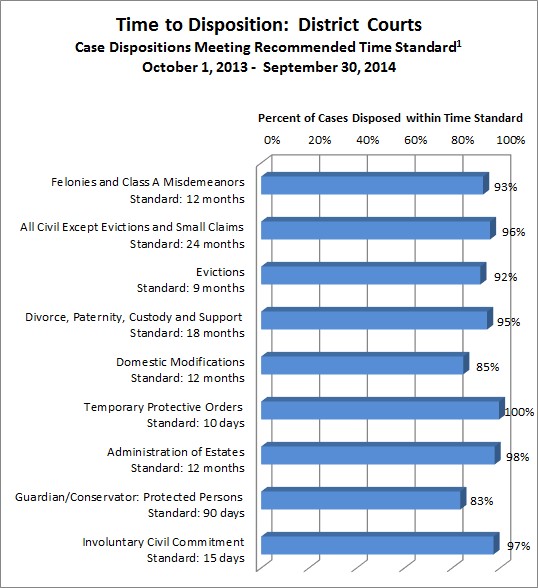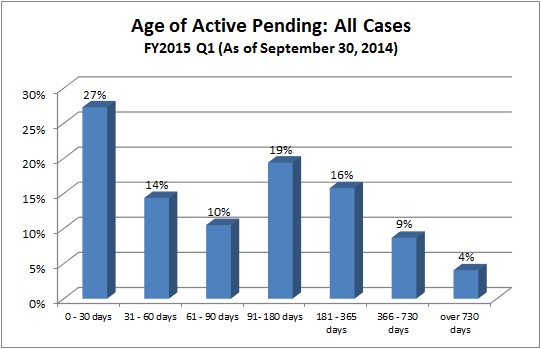The District Court has original jurisdiction to hear civil cases, criminal felonies, and Class A misdemeanors. Civil cases include, but are not limited to, contracts, torts, and property cases. Criminal cases heard in the district court include offenses such as homicides, assaults, drug and sex offenses, forgery, arson, robbery, and driving under the influence. The District Court may also hear class B and C misdemeanors when a city justice court is unavailable. District Courts hear domestic relations cases, such as divorces, child custody, child support, adoptions, and probate. District judges have the power to issue warrants, subpoenas, and ex parte protective orders. In addition, the court serves as an appellate court to review informal adjudicative proceedings from administrative agencies and de novo review of justice court appeals.
During the 2015 General Session, the Legislature appropriated for Fiscal Year 2016, $47,174,600 from all sources for District Courts. This is a 6.7 percent increase from Fiscal Year 2015 revised estimated amounts from all sources. The total includes $45,293,600 from the General/Education Funds, an increase of 9.1 percent from revised Fiscal Year 2015 estimates.
In addition to statewide compensation and internal service fund cost increases, the following appropriation adjustments were made during the 2015 General Session:
The District Courts employ several performance metrics. Measures include clearance rates, time to case disposition, and age of active pending cases.
One primary measure of performance for the State District Courts is the clearance rate. This metric measures the rate at which the Courts dispose of a case versus the number of cases that are filed. A clearance rate greater than 100% translates into a reduction in the Courts' case pending counts. A rate below 100% means that fewer cases are being closed than are being opened.
Below are the clearance rates for certain types of cases within the District Courts. Criminal cases typically take longer to process than all other types of cases.

Time to disposition is the the time taken to complete or dispose of court cases.

The measurement of the age of active pending cases counts the number of pending court cases and the length of time they have been pending.

Judicial Support : Each district judge has a deputy court clerk to assist the judge in scheduling hearings and pre-trial conferences and handle the day-to-day business of the district court. Judges have a bailiff available during any court proceeding where it is deemed necessary by the judge. Either a court reporter or an electronic recording device is provided to maintain a record of all court proceedings. In the more populous districts, domestic court commissioners assist district judges by conducting pre-trial domestic hearings, pursuing settlements, entering temporary orders and making final recommendations to the judges in domestic relations cases. If a party disagrees with a court commissioner's recommendation, a hearing may be requested before a judge. In some districts, court referees are available to assist in the resolution of traffic cases.
Small Claims: The District Courts have a small claims department, which covers disputes under $7,500. A district judge may hear small claims cases, but typically a judge pro tempore hears such cases. In areas where a judge pro tempore has not been assigned, the district judge may transfer a small claims case to a justice court. Any individual or business may use small claims court.
COBI contains unaudited data as presented to the Legislature by state agencies at the time of publication. For audited financial data see the State of Utah's Comprehensive Annual Financial Reports.